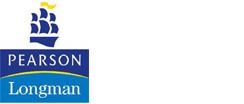Continuing Mathematics Project
The Continuing Mathematics Project (CMP), published by Longman in the 1970s, was conceived as a response to the problem of insufficiently numerate students who were studying beyond '0' level. The Dainton Report recommended that " ... normally all pupils should study mathematics until they leave school ...". The provision of courses was problematic, partly because of the diverse needs of the students and partly because a critical shortage of mathematics teachers made it difficult to provide appropriate courses in many schools. This climate of concern coincided with the founding of a new government-funded organisation – the National Council for Educational Technology. Soon after it was established, the National Council held a conference to consider areas of the education system where it might promote and stimulate activity demonstrating the contribution of educational technology in the systematic development and evaluation of learning systems. Initially the Project was conceived to have quite a revolutionary structure with units, each containing a system of programmes and diagnostic tests, that would include audio-visual resources where appropriate. In addition, there would be accompanying materials for teachers, such as teacher manuals and films of the material in use. Teachers suggested independent learning materials might make a welcome contribution. The relative complexity of material involving texts, answer booklets, games, film-strips and tapes was immediately seen as a major problem by the specialists who identified the marketing difficulties which were likely to arise. Although some initial units had audiovisual materials, it was distilled into self learning booklets. These booklets were divided into three categories: (i) revision units (ii) introductory units (iii) sequences of units forming short courses.
Resources
Filter
This unit from the Continuing Mathematics Project assumes that students have met and used directed numbers, but that their use has become rusty. The unit briefly justifies the rules by which the four operations (+, -, x and ÷) can be accurately carried out. In this sense the unit could be said to form an...
This unit from the Continuing Mathematics Project is designed to enable students to cope confidently with expressions of the type A/B= C/D, where A, B, C and D, may be integers or algebraic products like mv2 or functions like log x, or sin y.
So equipped, students will be able to solve simple equations,...
The unit from the Continuing Mathematics Project focuses on the x2 test as it is one of the most widely used statistical techniques. It is employed to compare theory with practice in biology, geography and the social sciences.
This unit is concerned with the practicalities of using the x2 test; stating a...
This is the second part of the unit on The Theory of Logarithms from the Continuing Mathematics Project. It assumes that the user has completed the first part of the unit.
The objectives of the unit are to enable students to:
(i) acquire the concept of a logarithm as an extension of the concepts of a '...






